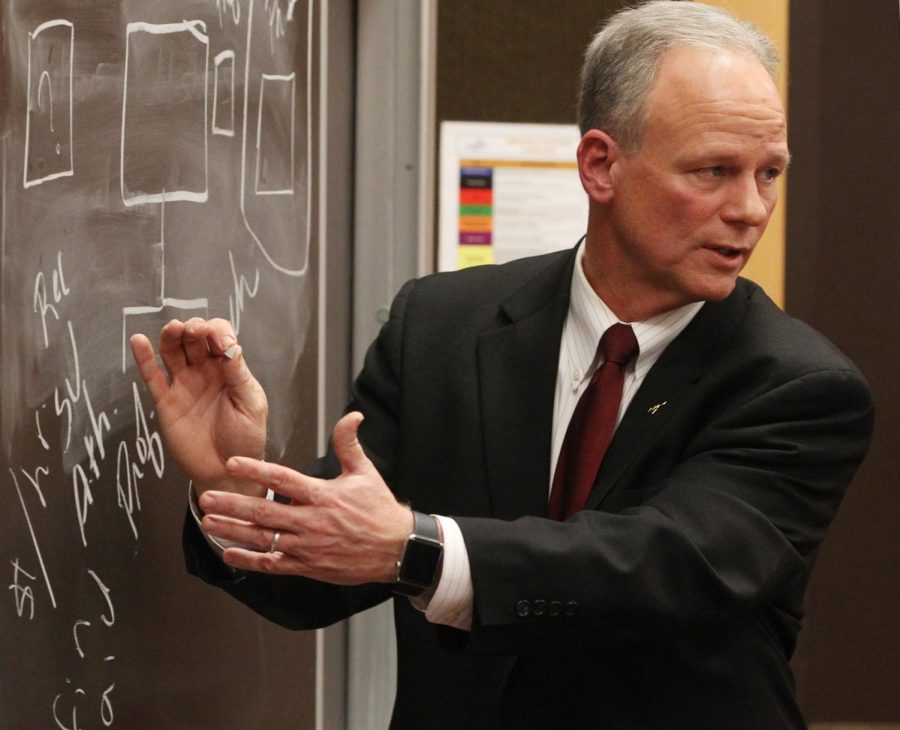UA’s board considers president’s actions
University of Akron President Scott Scarborough gives his report to the UA Faculty Senate during their meeting on Thursday, Feb. 4, 2016 in Akron, Ohio. Later in the meeting the senate voted and affirmed a resolution of no confidence in Scarborough.
February 16, 2016
The University of Akron Faculty Senate’s overwhelming vote of no confidence in President Scott Scarborough’s administration last week have now been a topic of serious discussion in the latest board of trustees meeting.
The senate gave the 50-2 vote in a meeting last week after Scarborough spoke about plans for the year.
Pamela Schulze, a faculty member at the University of Akron, said she hopes for a definite change moving forward.
“I think that probably different faculty hope for different things. But I know quite a few faculty that wish Scarborough would resign,” Schulze said.
Scarborough was named president of the University of Akron in July 2014 after Luis Proenza, Akron’s longest tenured president, decided to step down and return to teaching. Scarborough was previously the provost and executive vice president of academic affairs at the University of Toledo. At the beginning of his presidency, Scarborough had outlined plans to reduce the school’s debt and create a stronger brand for the university amongst declining enrollment.
In late 2015, the University of Akron Board of Trustees supported Scarborough’s decision to cut over 200 staff positions in non-core areas within the university, as stated in a press release.
“We believe Dr. Scott Scarborough has appropriately and effectively addressed the issues presented to him when he assumed his position just over a year ago. He has presided over the development of a bold plan to take The University of Akron to new heights. He has made tough and unpopular decisions,” said Jonathan Pavloff, president of the University of Akron board of trustees in an official university statement from August.
Decisions such as these have been unpopular with students at the university. Students and faculty have protested at Board of Trustee meetings multiple times throughout the school year. Schulze acknowledged the feelings of disdain at the school, but added that she could not provide specifics.
“I think there are some students who are very upset with the administration, but I don’t know how widespread those feelings are,” she said.
Casey Andrew, a former University of Akron student, transferred to Stark State College because of her issues with Akron’s administration.
“I left because of the president and all of the controversial press he was getting about where he was choosing to spend money, and how he was cutting so many things from the university,” Andrews said. “I couldn’t wrap my head around many of his new policies and got confused by them.”
Andrews reverted from senior to junior status during her transfer, but still felt as though her decision was validated.
“I saw an article released by the (Akron) Beacon Journal a few weeks ago saying that the board has no faith in the new president. That sealed the deal that I made the right choice in leaving as well,” Andrews said.
At this time, no official actions have been made to remove Scarborough as president.
Olivia Minnier is an administration reporter. Angelo Angel is an entertainment reporter.












